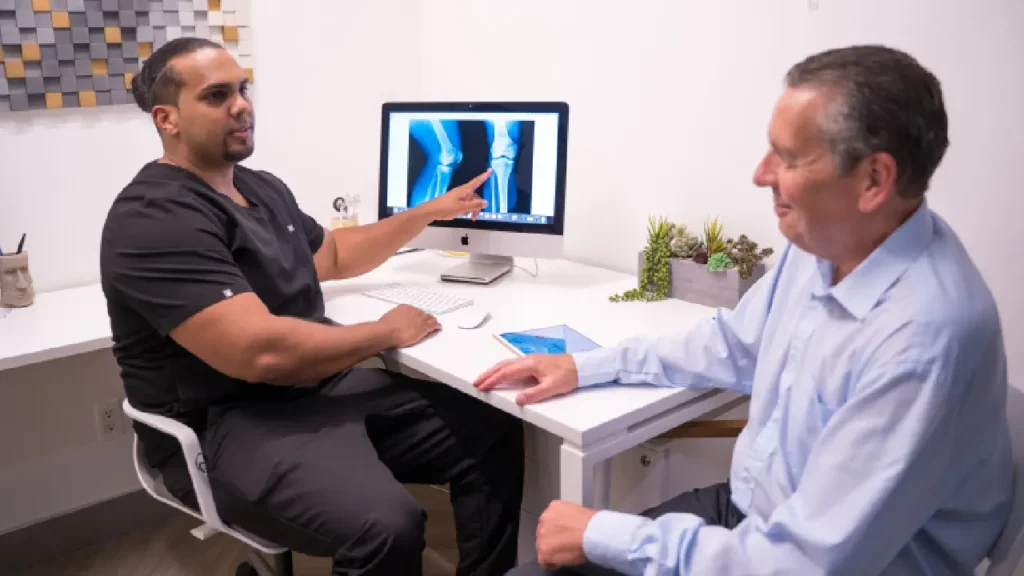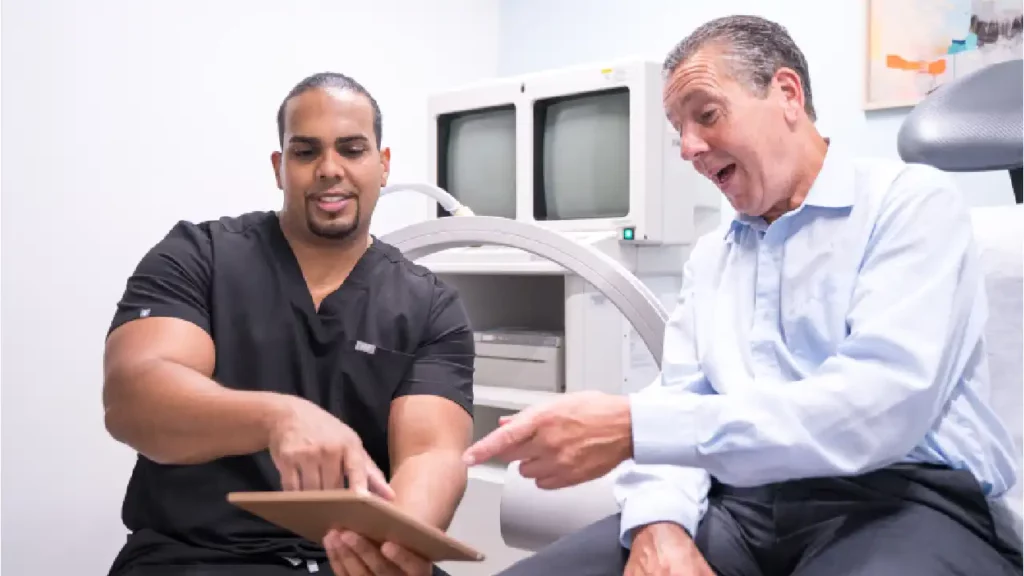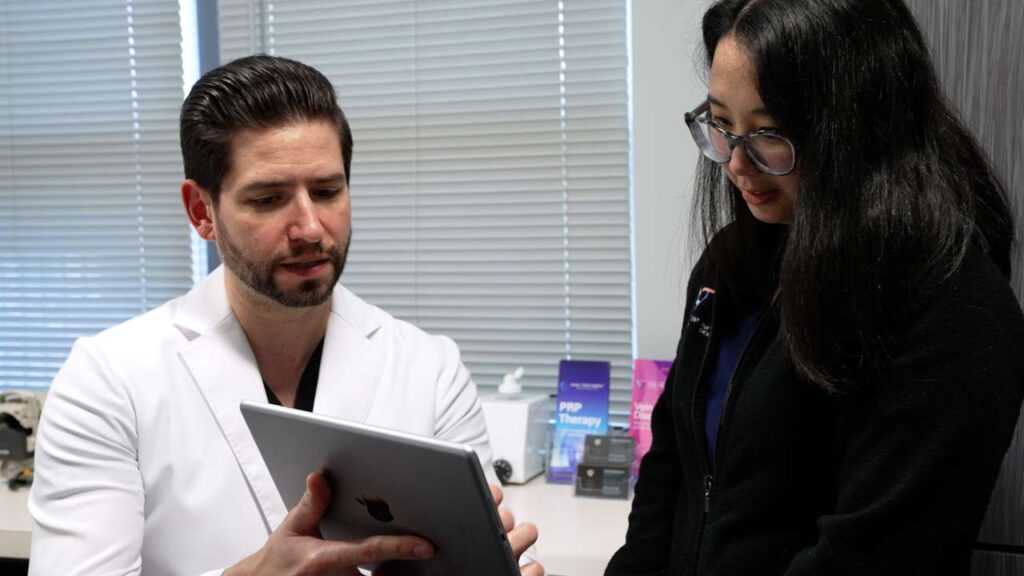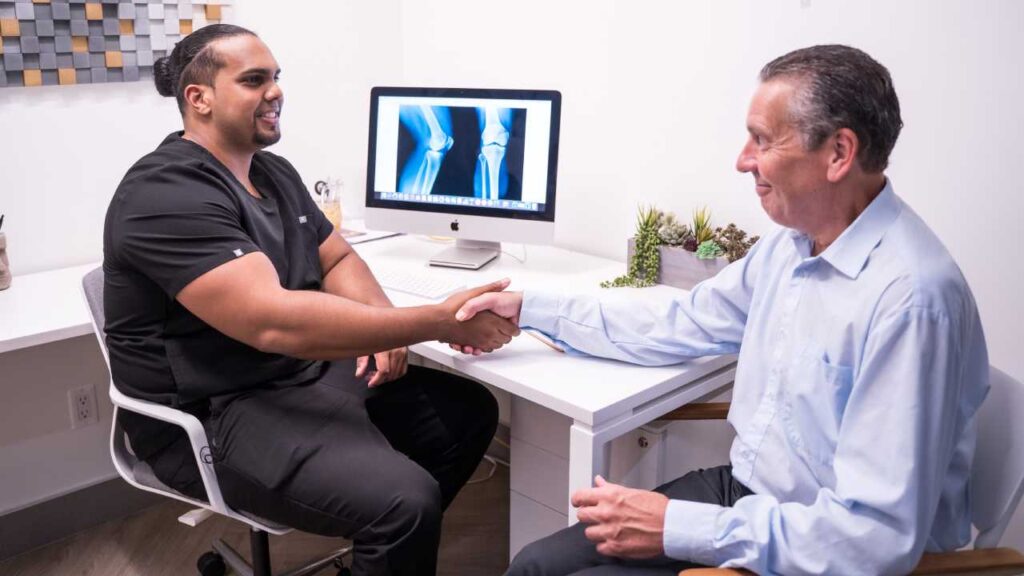What’s the Fastest GSV Vein Treatment Procedure?
The latest, minimally invasive, great saphenous vein (GSV) ablation procedures enable doctors to treat varicose veins, spider veins, and vein disease within minutes, using outpatient procedures that don’t require general anesthesia. Cutting-edge varicose vein ablation procedures include radiofrequency ablation, endovenous laser ablation, and non-thermal ablative techniques like sclerotherapy, vein adhesives, and mechanochemical ablation. Each procedure is remarkably fast and allows the patient to resume their normal routine immediately after treatment. Click HERE to visit our award-winning New Jersey vein centers and see which procedure is right for you!
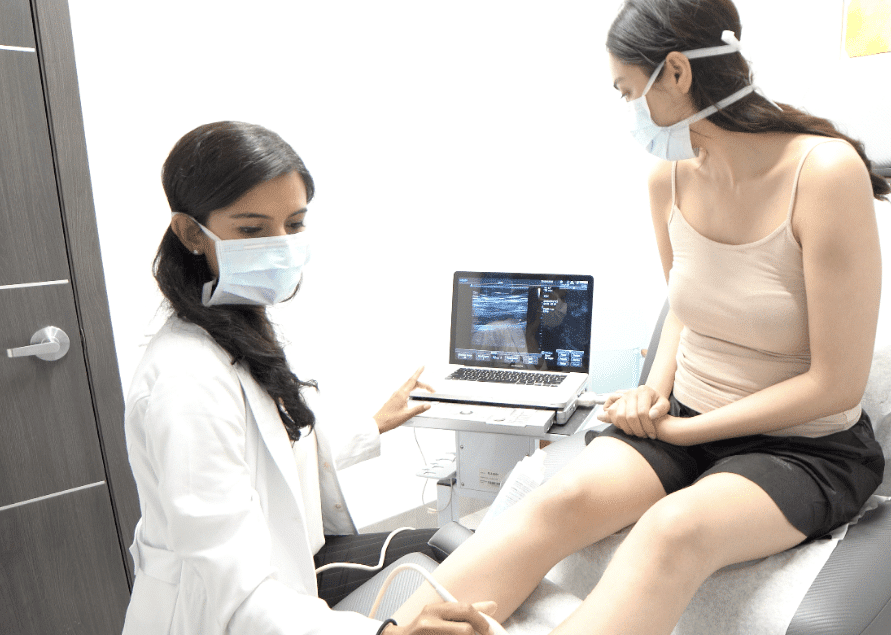
How Long Does Vein Ablation Take?
Our minimally invasive vein specialists can remove (ablate) varicose veins in just 15-30 minutes. Since our procedures are primarily non-surgical, there are no lengthy steps to treatment like administering and awakening from general anesthesia. Our New Jersey vein doctors use tiny needles and catheters, guided by ultrasound imaging, to position the treatment precisely at the source and destroy the vein without removing it from the body. There is no time wasted on stitching up wounds, monitoring patients after the procedure, or staying overnight in the hospital. Our patients routinely seek varicose veins treatment during their lunch break or in between errands, since it doesn’t inhibit their activity.
Is Vascular Surgery for Varicose Veins Treatment Fast?
Vascular surgery for varicose veins is not as efficient as minimally invasive procedures. Since vein stripping surgery involves cutting down to the vein and pulling it out of the body, there are extra steps, including administering general or local anesthesia, making multiple, deep incisions, sewing up the wounds, and monitoring the patient post-procedure, which often requires an overnight stay in the hospital.
Fortunately, most patients no longer require traditional vascular surgery for varicose veins treatment. Gentler treatment for varicose veins, like radiofrequency vein ablation, is preferred over surgical varicose vein removal for the vast majority of patients. Patients who do need surgery are often eligible for newer surgical methods like ambulatory phlebectomy, which is less invasive and time-consuming than traditional vein stripping.
Is Varicose Vein Treatment Surgery Faster Than Ablation?
No, varicose vein surgery is not faster than minimally invasive vein ablation. Since ablation can be done in-office, without anesthesia, the procedure time is significantly reduced. In addition, patients can move around immediately after non-surgical vein ablation, so the appointment is shortened by the fact that patients don’t have to wait under observation before going home. Most patients can even drive themselves home or back to work, since they aren’t sedated for the procedure and discomfort is minimal. We encourage patients to resume activity immediately after minimally invasive varicose vein ablation to enhance circulation.
Endovenous Ablation Therapy of Incompetent Vein Duration?
Endovenous ablation therapy of an incompetent vein is typically done in 15-30 minutes. Since there is no anesthesia, you don’t have to come in early or wait for a specific amount of time after treatment. You simply arrive at your appointment time, receive treatment, and head on your way, in well under an hour. When you arrive, you’ll rest comfortably with your leg elevated. The doctor will clean the treated area, insert the endovenous treatment device, and deliver treatment throughout the length of the vein area that’s compromised. If needed, they’ll observe treatment with Duplex Ultrasound to ensure successful ablation. Our patients regularly remark that they would have treated vein damage years ago if they knew how fast it was!
Vein Stripping vs Ablation: Which Is Faster?
Vein stripping is a longer procedure than vein ablation, and the recovery time is also longer. Vein stripping involves several incisions, typically near the groin and knee, to access the varicose vein and pull it out of the body. Since it involves anesthetics and wounds, extra time is taken to close the incisions and monitor the patient after the procedure for anesthesia complications, bleeding, blood clots, or infection. Most patients can’t immediately resume work or exercise after surgical varicose vein removal, but they can after minimally invasive vein ablation.
Average Radiofrequency Ablation Varicose Veins Recovery Time?
Vascular surgery varicose vein treatments can take months to recover from, but radiofrequency ablation of varicose veins recovery time is incredibly short. Patients can walk around right after treatment and resume moderate exercise with their doctor’s approval. Most patients go right back to work and don’t require any recovery time whatsoever. Since our doctors use a tiny instrument, like a radiofrequency or laser fiber, there are no wounds to heal or pain to contend with. Some patients need to wear compression stockings for a few days, but others don’t even require this step.
Is Post Varicose Vein Surgery Care Time-Consuming?
While radiofrequency ablation requires no recovery time, varicose vein surgery involves more post-procedural care. Depending on the number of incisions, severity of vein damage, and your unique medical history and risk profile, recovery might require you to wear compression stockings, elevate your leg, tend to wounds and bandages, avoid bathing, take time off work, avoid strenuous activity, take blood thinners, take medications to prevent infection, or have a follow-up appointment.
Patients usually can’t drive themselves home from surgery and they might require assistance for a while after surgery. If you’ve been recommended for varicose veins surgery, ask our Harvard-trained doctors for a second opinion. Many vein centers aren’t equipped with the latest minimally invasive devices, so they might recommend surgery when a gentler option is the better choice for you.
Varicose Vein Removal Before and After: How Long for Results?
Endovenous ablation is not technically varicose vein “removal,” since we don’t extract the vein from the body. Instead, we treat it within the body, closing it off so it shrinks and disappears. This is a rapid way to see results, since the thermal energy heats the vein instantly, causing it to swell and then seal itself shut, preventing blood from entering it anymore.
Varicose veins bulge and protrude because of valve failure deeper in the vein that causes excessive pressure within the vein. When blood can no longer travel through the faulty valve, the varicose vein shrinks from sight and is harmlessly absorbed by the body. In contrast to surgery, this technique avoids the lingering signs of varicose veins treatment, like wounds, bandages, scars, and significant bruising and swelling. Patients are thrilled to see their skin restored to its natural beauty promptly with endovenous ablation.
What’s the Varicose Vein Treatment Before and After Timeline?
When you have a minimally invasive varicose vein ablation procedure, the before and after difference is apparent quickly. Since there is less swelling and bruising and no wounds to heal with these procedures, it’s easier to see your results. The procedures begin working instantly, and the vein shrinks from sight quickly, with noticeable results within the first week.
Depending on the extent of vein damage, most patients will have complete resolution within 10-14 days after treatment. But you don’t have to wait until the vein is completely gone to resume your regular routines. There is no downtime with varicose vein ablation, so you don’t have to wait for the vein to “heal” as you would with varicose vein surgery.
How Long Does Swelling After Vein Ablation Last?
Swelling with vein ablation is minimal- in fact, some patients have no swelling at all. For those who do, it typically resolves within 24-48 hours, and you can expedite the process by icing and elevating your leg while at rest or wearing a compression stocking, if your vein doctor recommends that. With radiofrequency ablation of varicose veins, complications are rare, so patients don’t need to factor in time to recover from side effects or setbacks.
What’s the Quickest Varicose Vein Ablation Procedure for Me?
The quickest varicose vein ablation procedure is the minimally invasive method that’s best suited to you. Radiofrequency devices, endovenous laser fibers, sclerosants, vein adhesives, and mechanochemical catheters all ablate varicose veins within minutes, so there are several quick methods to choose from.
All of our procedures are FDA-approved and administered by board certified vein doctors in our fully accredited NJ vein centers, so most patients achieve full insurance coverage for spider vein treatment, varicose vein treatment, and treatment of vein diseases like Chronic Venous Insufficiency. Book your consultation today to determine which procedure is ideal for your unique venous anatomy, as well as your symptoms, preferences, and concerns.
